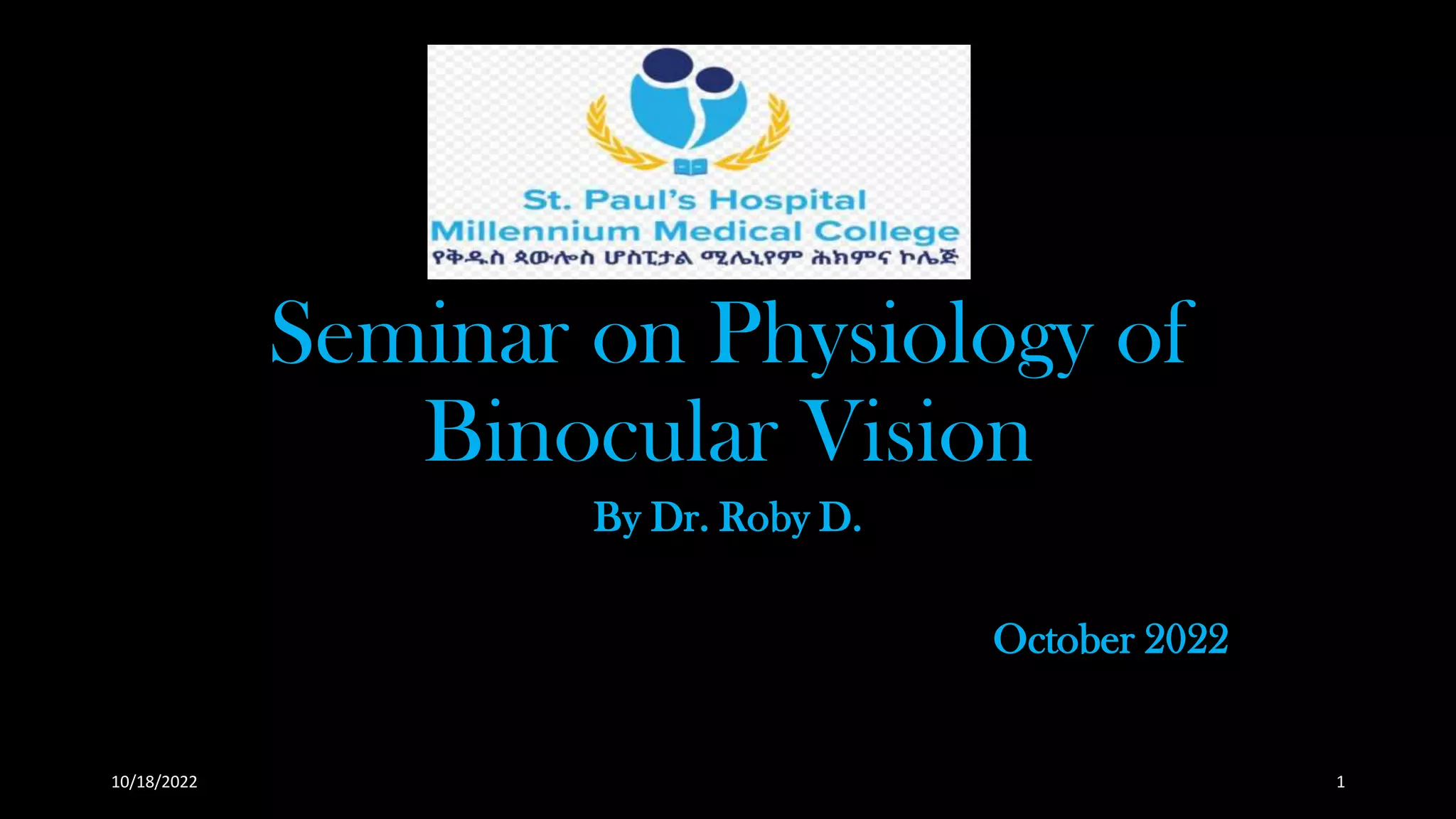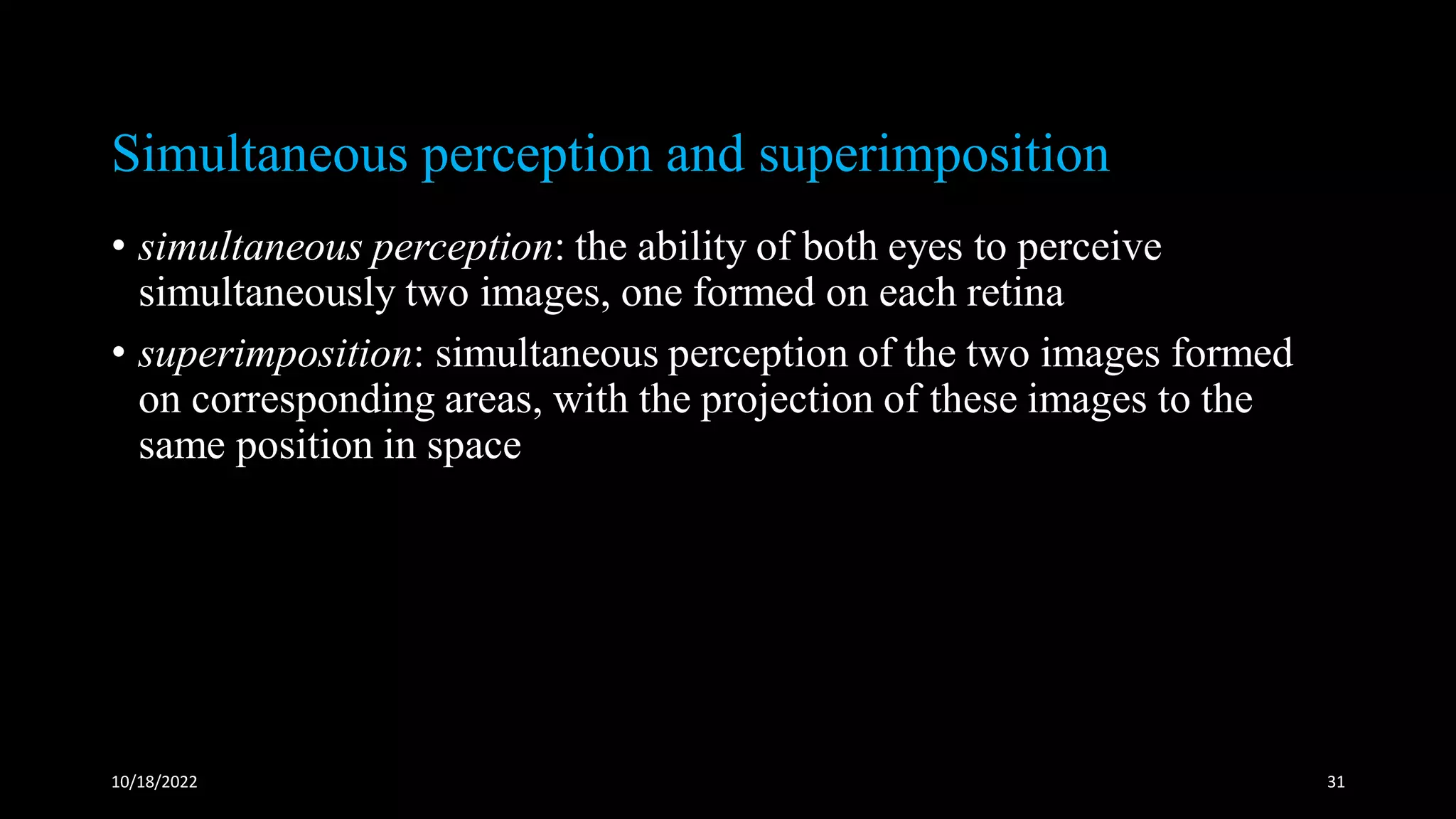The document outlines a seminar on the physiology of binocular vision presented by Dr. Roby D. in October 2022, covering its definitions, development theories, and physiological mechanisms. It discusses various grades of binocular vision, the importance of alignment and reflexes, as well as obstacles to its development and different theories explaining binocular functions. Additionally, it explains the concepts of visual direction, retinal correspondence, stereopsis, and aspects of depth perception that arise from the simultaneous use of both eyes.














































































